Junior Manager
100+ Junior Manager Interview Questions and Answers

Asked in Syngene International

Q. What are the responsibility and how to resolve deviations and other qms ?
Responsibilities include identifying and resolving deviations in the QMS.
Identify deviations from established QMS procedures
Investigate the root cause of the deviation
Develop and implement corrective actions to prevent recurrence
Document all deviations and corrective actions taken
Ensure compliance with regulatory requirements
Provide training to employees on QMS procedures
Conduct internal audits to identify potential deviations
Collaborate with cross-functional teams to resolve...read more

Asked in VE Commercial Vehicles

Q. What is otto cycle, Reverse carnot cycle, working of split AC. Family details and Many questions related to personal life
The question asks about Otto cycle, Reverse Carnot cycle, and the working of a split AC. It also includes questions about personal life and family details.
Otto cycle is a theoretical cycle used in internal combustion engines.
Reverse Carnot cycle is a thermodynamic cycle that operates in reverse of the Carnot cycle.
Split AC works by separating the cooling and heating components into two units.
Personal life and family details are unrelated to the technical questions.
Junior Manager Interview Questions and Answers for Freshers
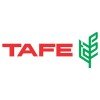
Asked in Tractors and Farm Equipment

Q. What is your experinec in SQA/ Supplier selection process / Supplier iddntification / supplier assesement / supplier ratings/ 4M change .
I have experience in SQA, supplier selection, identification, assessment, ratings, and 4M change.
I have worked on supplier identification and selection process for a manufacturing company.
I have conducted supplier assessments and ratings based on quality, delivery, cost, and service.
I have experience in implementing 4M change process for suppliers to improve their performance.
I have also worked on SQA activities such as supplier audits and quality control.

Asked in Vasudha Pharma Chem

Q. What's your receipt procedure! how can handled rejected material and return goods! What's your cleaning procedure daily! How to maintain temperature and humidity procedure! What's the using of PPI for flying ma...
read moreReceipt, rejection, return, cleaning, temperature, humidity, and PPI procedures for Junior Manager role.
Receipt procedure involves verifying the received material against the purchase order and packing list.
Rejected material is segregated and returned to the supplier or disposed of as per the company's policy.
Return goods are accepted only after verifying the reason for return and ensuring that they are in a saleable condition.
Cleaning procedure involves daily cleaning of the...read more

Asked in Syngene International

Q. What is validation and how do you define the validation process?
Validation is the process of ensuring that a product or service meets the specified requirements and standards.
Validation involves testing and verifying a product or service to ensure that it meets the desired specifications and standards.
The validation process typically involves planning, designing, executing, and documenting tests to ensure that the product or service meets the desired quality standards.
Validation can be done through various methods such as manual testing, ...read more

Asked in Nelson Global Products

Q. How do you handle different types of customer complaints?
Handling customer complaints involves active listening, empathy, and prompt resolution.
Listen attentively to the customer's complaint without interrupting
Show empathy and understanding towards the customer's frustration
Apologize for the inconvenience caused and take responsibility
Offer a solution or propose alternatives to resolve the issue
Follow up with the customer to ensure their satisfaction
Junior Manager Jobs
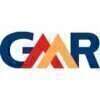



Asked in Nelson Global Products

Q. How many clauses are auditable in IATF 16949?
There are numerous clauses that are auditable in IATF 16949.
IATF 16949 is a quality management standard specifically for the automotive industry.
It is based on ISO 9001 and includes additional requirements specific to automotive manufacturing.
The standard consists of 10 sections, each containing multiple clauses that are auditable.
Some of the auditable clauses include management commitment, customer focus, product realization, measurement analysis, and improvement.
For example...read more
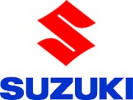
Asked in suzuki motor gujarat

Q. How would you adapt to living in a rural village?
I will stay in the village by immersing myself in the community and contributing to its development.
I will actively participate in community events and activities.
I will build relationships with the villagers and gain their trust.
I will learn about the village's culture, traditions, and history.
I will contribute my skills and knowledge to help improve the village's infrastructure or services.
I will adapt to the village lifestyle and embrace the slower pace of life.
I will expl...read more
Share interview questions and help millions of jobseekers 🌟


Asked in JSW Steel

Q. How do you measure the health of a cast house main trough?
Cast house main trough healthiness can be measured through various methods.
Visual inspection of the trough for cracks, leaks, and erosion
Measurement of metal temperature and flow rate
Analysis of metal samples for impurities and composition
Regular maintenance and cleaning of the trough
Monitoring of the casting process for any abnormalities

Asked in VE Commercial Vehicles

Q. What is the difference between an alternator and a starter?
Alternator generates electricity while starter initiates engine rotation.
Alternator converts mechanical energy into electrical energy while starter converts electrical energy into mechanical energy
Alternator charges the battery while starter uses the battery to start the engine
Alternator is driven by the engine while starter is powered by the battery
Examples of alternator: car alternator, wind turbine alternator. Examples of starter: car starter motor, lawn mower starter moto...read more

Asked in Syngene International

Q. What are the validation deliverables and explain them in each phase of the validation life cycle?
Validation deliverables are documents that demonstrate compliance with regulations and requirements throughout the validation life cycle.
User Requirements Specification (URS) in the planning phase
Design Specification (DS) in the design phase
Installation Qualification (IQ) in the installation phase
Operational Qualification (OQ) in the testing phase
Performance Qualification (PQ) in the final phase
Traceability Matrix (TM) throughout the validation life cycle
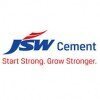
Asked in JSW Cement

Q. How do you handle local resistance during the implementation of a CSR program?
To face local agitation during implementation of any CSR program, it is important to prioritize communication, engage with stakeholders, address concerns, and adapt the program if necessary.
Prioritize communication and engage with local communities to understand their concerns and build trust.
Hold regular meetings and open forums to address any issues or misconceptions about the CSR program.
Involve local leaders and influencers to gain their support and help in resolving conf...read more

Asked in Jindal Steel and Power

Q. Why are there many construction projects happening in IIT?
IITs are centers of excellence in engineering and technology, hence require constant infrastructure development.
IITs are constantly expanding their research and development facilities
New departments and courses are being introduced, requiring additional infrastructure
Upgrades and maintenance of existing infrastructure is necessary
IITs also host various events and conferences, requiring additional facilities
Construction of new hostels and residential quarters for students and ...read more

Asked in Syngene International

Q. How do you maintain multitasking? How you will prioritise those?
I maintain multitasking by prioritizing tasks based on urgency and importance.
I make a to-do list and categorize tasks based on their urgency and importance.
I focus on completing urgent and important tasks first.
I delegate tasks that can be done by others.
I avoid distractions and stay focused on the task at hand.
I take breaks to avoid burnout and maintain productivity.

Asked in Gawar Construction

Q. What are the steps for identifying hazards, assessing risks, and implementing precautions as per the job specification?
Identifying hazards, assessing risks, and implementing precautions involve thorough evaluation and proactive measures to ensure safety.
Identify potential hazards in the workplace, such as slippery floors, faulty equipment, or hazardous chemicals.
Assess the risks associated with each hazard by considering the likelihood of occurrence and the potential impact on employees.
Implement precautions to control or eliminate the identified hazards, such as providing safety training, in...read more

Asked in Heavy Engineering Corporation

Q. What are the different types of units in which pressure is measured?
Pressure can be measured in various units such as pascal, bar, atmosphere, torr, and pounds per square inch (psi).
Pascal (Pa) is the SI unit of pressure.
Bar is commonly used in industrial applications.
Atmosphere (atm) is often used in meteorology.
Torr is used in vacuum measurements.
Pounds per square inch (psi) is commonly used in the United States.

Asked in SML Isuzu

Q. How can a piston seize if the lubrication and cooling systems are intact?
Pistons seize when lubrication and cooling systems fail, causing friction and heat buildup.
Pistons rely on lubrication to reduce friction between moving parts
Cooling system prevents overheating by circulating coolant around the engine
Without proper lubrication, friction increases and can cause the piston to seize
If the cooling system fails, heat buildup can also lead to piston seizure

Asked in SML Isuzu

Q. What are the symptoms of piston seizure due to lubrication system failure?
Symptom of piston seizure due to lubrication system failure is engine overheating and loss of power.
Engine overheating
Loss of power
Increased engine noise
Visible damage to piston or cylinder walls

Asked in SML Isuzu

Q. What is preload in bearings, why is it required, and which type of bearing needs adjustment?
Preload in bearings is the internal load applied to a bearing before it is put into service to reduce play and increase rigidity.
Preload is required to eliminate internal clearance and increase rigidity in bearings.
It is commonly used in high precision applications where minimal play is essential.
Types of bearings that may require preload adjustment include angular contact ball bearings and tapered roller bearings.

Asked in SML Isuzu

Q. What is the clamp load and release load in a clutch?
Clamp load is the force applied to hold the clutch plates together, while release load is the force needed to disengage the clutch plates.
Clamp load is the force that presses the clutch plates together to transmit power from the engine to the transmission.
Release load is the force required to disengage the clutch plates, allowing for gear changes or stopping the vehicle.
The clamp load must be greater than the release load to ensure proper engagement and disengagement of the c...read more

Asked in Cummins

Q. What exactly is order execution?
Order execution is the process of completing a trade or transaction in financial markets.
Order execution involves the timely and accurate processing of buy or sell orders.
It includes matching the order with a counterparty and executing the trade at the best available price.
Order execution can be done manually by traders or through automated systems.
Efficient order execution is crucial for minimizing transaction costs and maximizing returns.
Examples of order execution venues i...read more

Asked in suzuki motor gujarat

Q. What is PFMEA ? What do you know about PLC? What is Industry 4.0
PFMEA is a risk assessment tool used in manufacturing to identify and prevent potential failures in a process.
PFMEA stands for Process Failure Mode and Effects Analysis
It involves identifying potential failure modes in a process, determining their effects, and developing actions to prevent or mitigate them
It is commonly used in industries such as automotive, aerospace, and electronics manufacturing
Examples of potential failure modes include equipment malfunction, human error,...read more

Asked in Orange Business

Q. What do you mean by risk and impact assessment?
Risk and impact assessment involves identifying potential risks and evaluating their potential impact on a project or organization.
Identify potential risks and hazards
Evaluate the likelihood and severity of each risk
Assess the potential impact of each risk on the project or organization
Develop strategies to mitigate or manage risks
Regularly review and update risk assessments as needed

Asked in Eicher Engineering Components

Q. What is the lead time for a part to be finished?
The lead time of one part to be finished varies depending on the complexity of the part and the production process.
Lead time can range from a few hours to several weeks, depending on factors such as manufacturing processes, availability of materials, and production capacity.
Complex parts requiring precision machining may have longer lead times compared to simple parts that can be easily mass-produced.
Just-in-time manufacturing strategies aim to minimize lead times by reducing...read more

Asked in Nelson Global Products

Q. What are the different types of Control Plans, and can you briefly describe them?
Control plans are used to ensure quality and efficiency in various processes.
Preventive Control Plan: Identifies potential risks and implements measures to prevent them.
Detective Control Plan: Focuses on detecting and correcting errors or deviations.
Corrective Control Plan: Addresses issues that have already occurred and implements corrective actions.
Directive Control Plan: Provides guidance and instructions for carrying out tasks.
Concurrent Control Plan: Monitors ongoing pro...read more
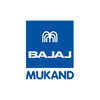
Asked in Mukand Limited

Q. what are different types of heat treatment processes
Different types of heat treatment processes include annealing, tempering, quenching, and case hardening.
Annealing: heating metal to a specific temperature and then slowly cooling it to relieve internal stresses and increase ductility.
Tempering: heating and then cooling metal to improve toughness and reduce brittleness.
Quenching: rapid cooling of metal to increase hardness.
Case hardening: adding a hard layer to the surface of metal while maintaining a softer core.
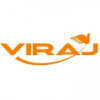
Asked in Viraj Profiles

Q. What materials are commonly used for shear blades, and what is their hardness?
Shear blades are typically made from high-carbon steel, tool steel, and carbide, with hardness ranging from 50 to 70 HRC.
High-carbon steel: Offers good hardness and wear resistance, commonly used in industrial shear blades.
Tool steel: Known for its toughness and ability to withstand high temperatures, often used in heavy-duty applications.
Carbide: Extremely hard and wear-resistant, ideal for cutting tough materials, often used in specialized applications.
Hardness range: Shear...read more
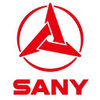
Asked in SANY Group

Q. Problem solving methods using with CFT and whats your role
Utilize CFT problem solving methods to address issues and discuss your role in the process.
Identify the issue or problem at hand
Gather a cross-functional team (CFT) with diverse expertise
Brainstorm potential solutions collectively
Analyze and evaluate each solution based on feasibility and impact
Implement the most effective solution as a team
Monitor and assess the outcomes for continuous improvement

Asked in SML Isuzu

Q. What is the role of the thermostat in an engine cooling system?
Thermostat regulates the flow of coolant in the engine cooling system to maintain optimal operating temperature.
Thermostat opens and closes to control the flow of coolant through the radiator.
Helps maintain the engine at its optimal operating temperature for efficiency and performance.
Prevents overheating by regulating the coolant flow based on the engine temperature.
Common issues include thermostat getting stuck closed or open, leading to engine overheating or poor heating i...read more

Asked in Narsingh Ispat

Q. Why is Morpholine preferred over Ammonia in HP dosing?
Ammonia is not used in HP dosing due to its corrosive nature and potential health hazards.
Ammonia is highly corrosive and can damage equipment over time.
Morpholine is less corrosive and safer to handle compared to Ammonia.
Ammonia can pose health risks if not handled properly, while Morpholine is considered safer for use in HP dosing.
Interview Questions of Similar Designations
Interview Experiences of Popular Companies






Calculate your in-hand salary
Confused about how your in-hand salary is calculated? Enter your annual salary (CTC) and get your in-hand salary


Reviews
Interviews
Salaries
Users










